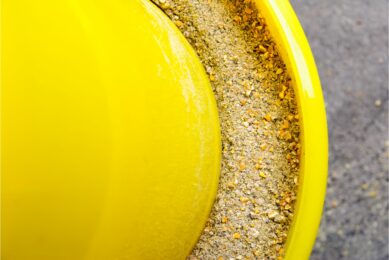Course ground lupin seeds digest better

Researchers at the Walloon Agriculture Research Centre in Gembloux, Belgium have conducted an experiment with cannuled Belgian Blue bulls to evaluate processing effects on the digestibility of lupin seeds.
All trial diets contained 320g/kg of lupin seed (Lupinus albus, var.
Lublanc) on a dry matter (DM) basis.
Four grinding treatments of raw
lupines (RAW) were used to obtain median particle sizes of approximately 0.5,
2.0, 4.2 or 6.0 mm.
One extrusion treatment (EXTR) was also used and
consisted of heating to 180°C for 30 seconds.
When inserted into the
cannules it showed that pH and ammonia nitrogen (NH3–N) concentration kinetics
in the rumen liquid differed between RAW and EXTR, the latter induced larger
variation in these parameters after the meal.
Clear effect of
grinding
Clear effects of the grinding level on rumen fermentation
parameters were observed at several sampling times for RAW.
The grinding
level had also clear effects on the intestinal digestibility of DM, organic
matter (OM) and N, reaching a maximum with treatment 4.2 mm.
Max 4.2
mm particles
The final outcome of the trial suggests that lupin seed
should be coarsely ground or flattened to obtain a mean particle size between
2.0 and 4.2 mm for cattle feed, but that an insufficient grinding level (6.0 mm)
induced a higher degradability of lupin protein, probably due to more intense
rumination.
Under the experimental conditions, extrusion did not
sufficiently improve the nutritional value of the seed to be economically
viable.
These results show that feeding standards should consider the
influence of the grinding level of legume seeds in order to assess their
nutritional value accurately.











